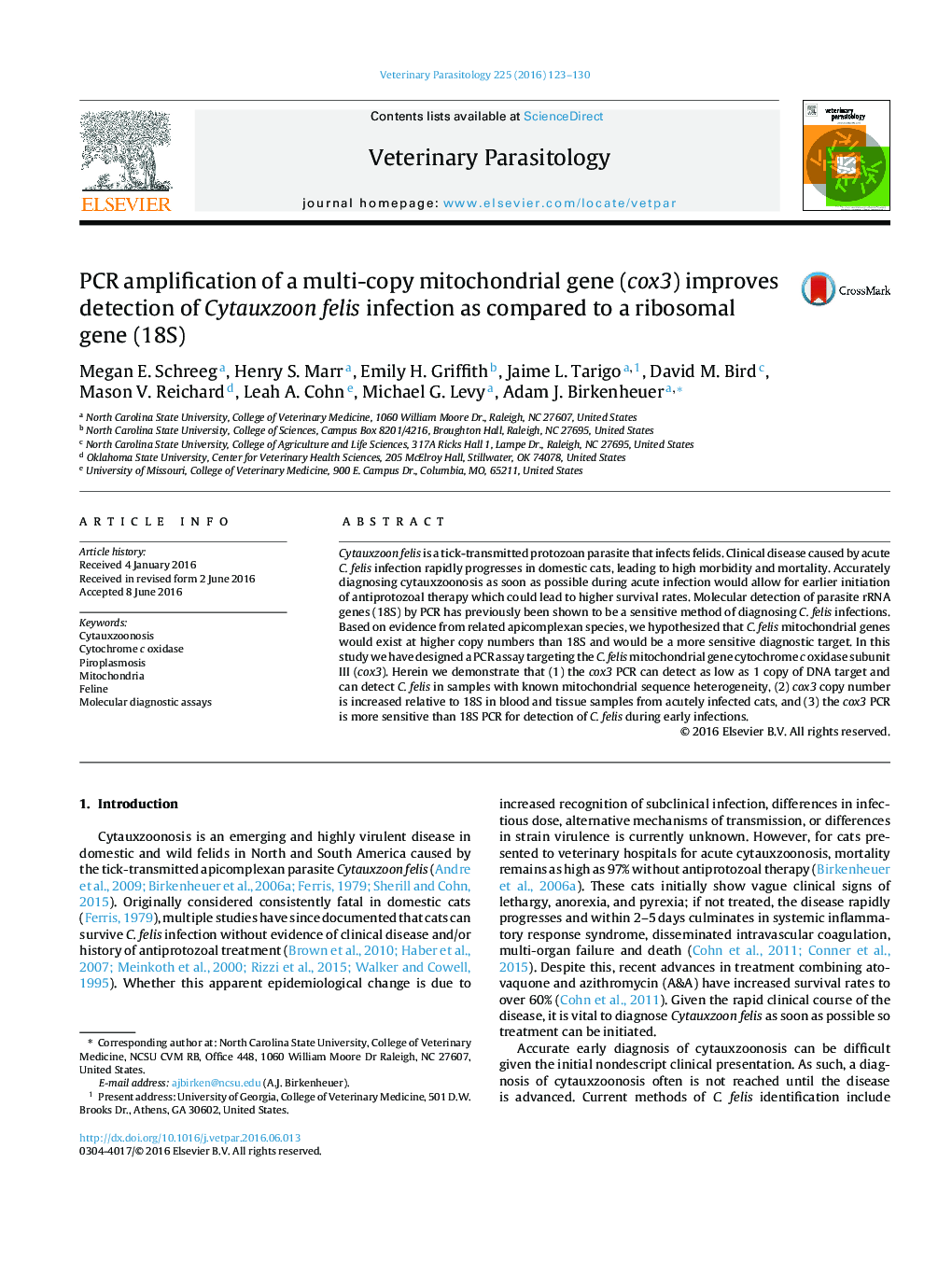| Article ID | Journal | Published Year | Pages | File Type |
|---|---|---|---|---|
| 5802137 | Veterinary Parasitology | 2016 | 8 Pages |
â¢There are more copies of a mitochondrial gene (cox3) than a chromosomal gene (18S) in the blood and tissues of domestic cats acutely infected with Cytauxzoon felis.â¢Cats chronically infected with C. felis for over a year on average have fewer copies of cox3 than 18S.â¢A cox3 PCR is a more sensitive at detecting early C. felis infection (7-9 days post-infection) than 18S.â¢This cox3 PCR should aid in the detection of early cytauxzoonosis and could assist in differentiating acute and chronic infections.
Cytauxzoon felis is a tick-transmitted protozoan parasite that infects felids. Clinical disease caused by acute C. felis infection rapidly progresses in domestic cats, leading to high morbidity and mortality. Accurately diagnosing cytauxzoonosis as soon as possible during acute infection would allow for earlier initiation of antiprotozoal therapy which could lead to higher survival rates. Molecular detection of parasite rRNA genes (18S) by PCR has previously been shown to be a sensitive method of diagnosing C. felis infections. Based on evidence from related apicomplexan species, we hypothesized that C. felis mitochondrial genes would exist at higher copy numbers than 18S and would be a more sensitive diagnostic target. In this study we have designed a PCR assay targeting the C. felis mitochondrial gene cytochrome c oxidase subunit III (cox3). Herein we demonstrate that (1) the cox3 PCR can detect as low as 1 copy of DNA target and can detect C. felis in samples with known mitochondrial sequence heterogeneity, (2) cox3 copy number is increased relative to 18S in blood and tissue samples from acutely infected cats, and (3) the cox3 PCR is more sensitive than 18S PCR for detection of C. felis during early infections.
